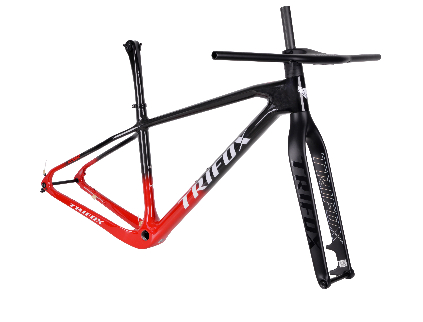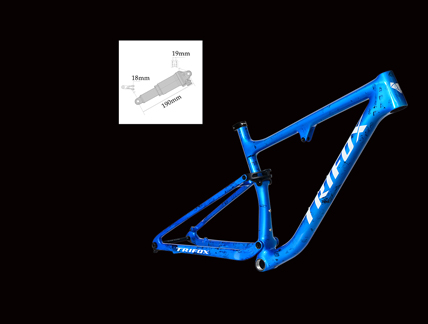When it comes to cycling, the performance of your bike isn’t just determined by your frame or gears. The wheels play a pivotal role, and within the wheels, the wheel hubs and associated parts are often the unsung heroes of your ride. Wheel hubs are crucial to your bike’s overall performance, affecting everything from speed to handling, efficiency, and comfort.
1. Efficient Power Transfer with Quality Hubs
Wheel hubs are at the heart of your bike’s wheel system, and they play a significant role in how power is transferred from your pedals to the ground. When you pedal, the energy you generate is transmitted through the drivetrain and into the wheel hubs. A high-quality hub can efficiently transfer this energy with minimal loss, making your efforts more effective. This efficiency is essential for long rides, competitive cycling, and hilly terrain where every bit of energy counts.
For example, hubs with a higher engagement rate—meaning the number of points where the pawls inside the hub engage—provide a quicker response to your pedaling. This is particularly advantageous when you’re climbing hills or sprinting, as it allows you to accelerate faster and transfer more of your power to the road without losing momentum.
2. Smoothness and Low Friction for Better Performance
Another key factor in how hubs affect cycling performance is their smoothness and level of friction. High-quality hubs are designed to reduce friction to a minimum, ensuring that your wheels spin freely with less effort. Hubs with high-quality bearings—often ceramic or sealed ball bearings—are more efficient at reducing friction compared to low-quality bearings. This means less energy is wasted during your ride, making it easier to maintain speed, especially during long-distance rides or on flat sections of road.
Smooth-running hubs are also less prone to wear and tear, which can result in improved longevity and lower maintenance costs over time. Hubs that are built with durability in mind can handle the rigors of various terrains without compromising performance.
3. Weight Considerations for Better Handling
Wheel hubs also impact the overall weight of your bike. Lighter hubs can contribute to a faster and more responsive ride, particularly for riders who participate in competitive cycling or racing. A lightweight hub allows your bike to accelerate more quickly, especially when transitioning between gears or during a sprint. On the other hand, heavier hubs can slow you down, particularly when climbing hills or navigating tight corners.
However, it's important to balance weight with durability and strength. For instance, carbon hubs may be lighter but could be less durable on rougher terrains compared to more robust aluminum hubs. Choosing the right hub for your needs and riding conditions is essential to ensure that you don't sacrifice performance for weight savings alone.
4. Improved Braking Performance with the Right Hubs
The interaction between your hubs and brake components can significantly impact your overall braking performance. For cyclists who use rim brakes, the quality of the wheel hubs can affect how evenly and effectively your braking surfaces work. Poor-quality hubs can lead to uneven braking, while high-quality hubs ensure that the wheels are aligned correctly for smooth and consistent braking power.
For disc brake-equipped bikes, the hub's compatibility with the rotor and the ability to withstand heat buildup is equally important. A quality hub helps maintain the structural integrity of the disc brake system, reducing the risk of warping or overheating, which can compromise braking efficiency and safety.
5. Durability for Longevity
When it comes to cycling, durability is key—especially if you ride regularly or tackle rough terrain. The right hubs, built with high-quality materials and precision engineering, offer improved longevity. Hubs made from durable materials like aluminum or steel tend to be more resilient to impacts, moisture, and dirt. This is particularly crucial for off-road cyclists or mountain bikers who face harsh conditions that can wear out components faster.
Additionally, hubs with sealed bearings or internal grease systems are better at keeping out dirt and water, ensuring the hubs maintain their smoothness and performance over time. This means less maintenance and fewer repairs, allowing you to focus more on your ride and less on frequent bike tune-ups.
6. Customization for Specific Cycling Needs
One of the most attractive features of modern wheel hubs is the variety of options available for different types of cycling. Whether you're a road cyclist, mountain biker, or triathlete, there are hubs specifically designed to meet the needs of your riding style. Road cyclists may opt for lightweight hubs with quick engagement for improved acceleration, while mountain bikers might prioritize durability and the ability to handle rough terrain.
Hubs also come in different axle types and configurations, allowing you to customize your bike to fit your riding style. For instance, through-axle hubs offer increased stability and strength, particularly for off-road cycling, while quick-release hubs provide convenience for road cyclists who need to make frequent tire changes.

Wheel hubs and their associated parts are crucial to your bike’s overall performance. From improving power transfer and reducing friction to enhancing comfort and longevity, the right hubs can make a noticeable difference in your cycling experience.
Investing in quality wheel hubs ensures that your bike runs more efficiently, lasts longer, and delivers a smoother ride—whether you're on the road, trail, or competing in races. By understanding how wheel hubs influence your performance, you can make better choices when upgrading your bike, ensuring a more enjoyable and efficient ride every time.





















































































